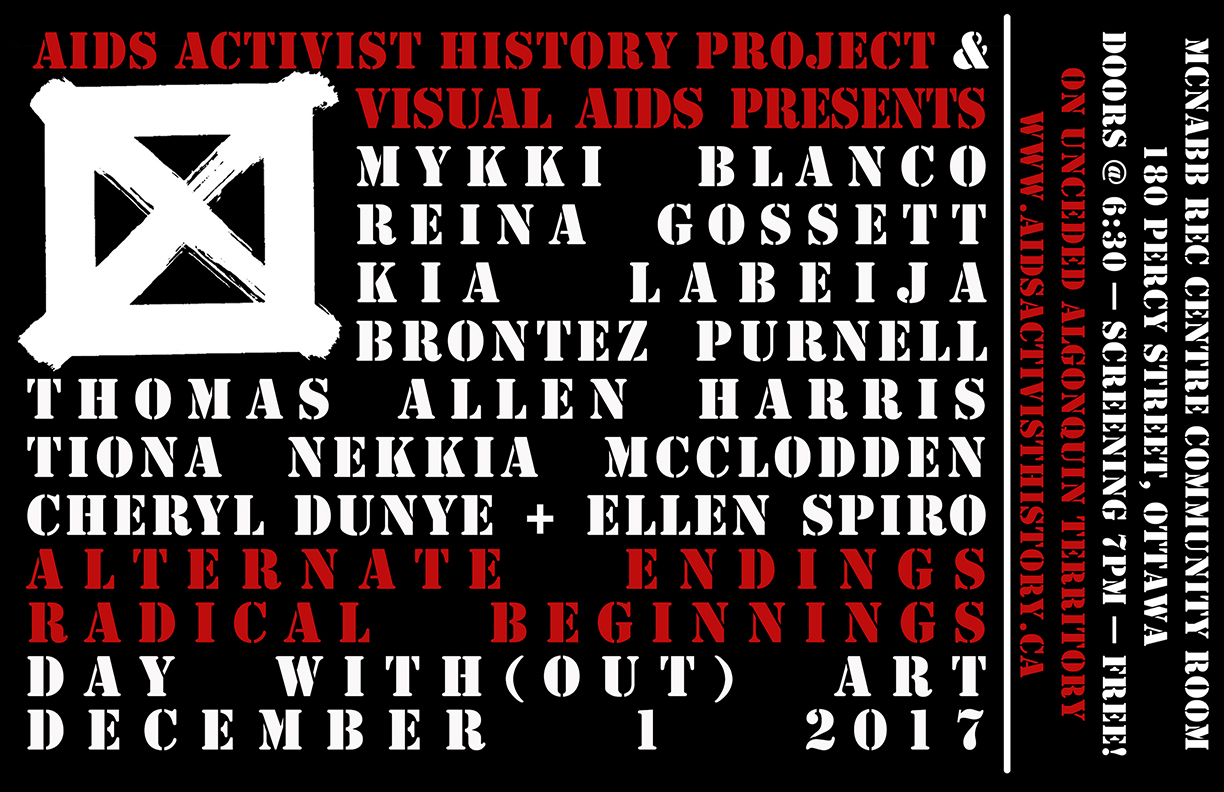The Colour of Immunity (1991) – 22 minutes, colour, english
by Glace W. Lawrence and the Black Coalition for AIDS Prevention
with original music by David Findlay
The work of the Black Coalition for AIDS Prevention (Black CAP) in Toronto has been discussed in numerous oral history transcripts we’ve recorded at the AAHP. Douglas Stewart and Dionne Falconer, the first two Executive Directors of the organization, tell the origin and and history of Black CAP’s emergence from the AIDS Committee of Toronto and the Toronto African, Caribbean, and Black (ACB) organizing milieu connected to Zami in the late 1980s. But in this instalment of “From the Video Vault” we have an early prevention video from Black CAP to share with you that was directed by Glace Lawrence with original music from David Findlay. According to its creators, this video was the first HIV/AIDS video produced for and by ACB communities in Canada. The video has been recovered, digitized, and preserved in full above thanks to the work and generosity of director Glace Lawrence, the current Executive Director of Black CAP Shannon Ryan, Wanda vanderStoop at Vtape, and the team at the AIDS Activist History Project. While the educational preview is streaming here at no cost—do consider an institutional purchase of the DVD to continue supporting the important work of both Vtape and Black CAP.

The Colour of Immunity was produced for the Toronto Living With AIDS (TLWA) cable access series. TLWA was distributed on Roger’s and MacLean Hunter cable networks in Toronto from 1990-1991. It was produced under the leadership of video artist Michael Balser (1952-2002) and well-known video artist John Greyson. The two worked out of the same artist run centre, Trinity Square Video, and were associated with the artist-run video distribution centre Vtape. Inspired by the Gay Men’s Health Crisis’ Living with AIDS television series in New York City (1988-1994), TLWA followed up two of Greyson’s previous AIDS video curation projects: the one-hour compilation tape Angry Initiatives, Defiant Strategies produced for Deep Dish TV in 1988 and the three-VHS tape program of over twenty international AIDS videos, Video Against AIDS (1989, co-curated with Bill Horrigan). Interestingly, the TLWA series was funded, not by the Canada Council for the Arts, but by grants from the City of Toronto Board of Health, Health & Welfare Canada, and the Ontario Ministry of Health. The series featured eleven approximately thirty-minute videos created by a diverse array of video artists, activists, and community organizations in Toronto. While the series formally ended in 1991 after being censored by Roger’s Cable, some of the eleven original tapes continued to be shown in film festivals and organizations kept their tapes in circulation for educational purposes, including Glace Lawrence and Black CAP’s The Colour of Immunity.

Catching up with Glace by email in the fall of 2017, she recounts getting involved with The Colour of Immunity video project as a member of Trinity Square Video (TSV), the artist run centre Michael Balser and John Greyson were launching the TLWA series from. Although she noted her memory was a bit fuzzy, her presence at TSV and the fact that she completed her first film in 1989 made her a natural fit for the project.
In discussing the video’s life beyond the TLWA series and how Black CAP used the tape, she recalls, “Initially when it was made there were a few public screenings. One of them was at Harbourfront Centre, and at the Ontario Black History Society. I suspect that the latter was due to the fact that I used to work at the Society. Then it was used in HIV prevention workshops at Black CAP. It was geared to the ‘MTV’ audience. They wanted content that would engage youth of the MTV generation.”
Elaborating, Glace notes that while The Colour of Immunity was explicitly youth oriented, there was indeed another production that Black CAP was involved with after her video. She recalls, “Survivors (1992), was more family oriented. It was financed through Black CAP via private funding and director/producer Alfons Adetuyi helped develop the proposal. Prior to that time, there weren’t any Canadian based productions that focused on the Black and Caribbean experience locally.”
And while this post largely focuses on preserving and historicizing the critical early work of Glace Lawrence, Black CAP continues to use video to this day in helping promote its work, tell its own story, and fight the ongoing AIDS epidemic. Below, Black CAP’s twentieth anniversary video produced by Alison Duke—another powerhouse Black woman filmmaker whose contemporary work often deals with HIV/AIDS and ACB communities—reflects on twenty years of activism and services provided under the Black CAP banner.













